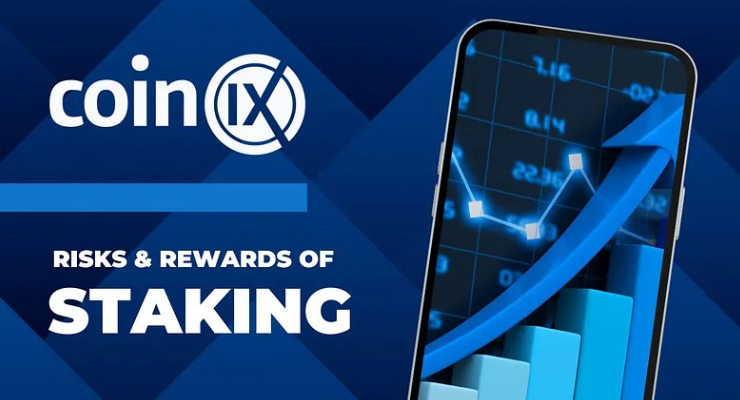In the ever-evolving landscape of cryptocurrencies, investors and enthusiasts are constantly seeking avenues to maximize their holdings. Staking has emerged as a compelling option. As decentralized networks continue to gain prominence, the act of staking has become a pivotal mechanism for securing and validating transactions.
However, the enticing promise of rewards is accompanied by inherent risks that demand careful consideration. In this article, we delve into the opportunities that lure investors as well as the challenges.
Advantages of Staking
Engaging in token staking presents advantages that extend far beyond the conventional investment strategies in the cryptocurrency realm. One of the primary enticements lies in the prospect of earning passive income, allowing participants to harness the potential of their digital assets without selling. Staking not only fosters financial gains but also introduces an element of strategic token management by incentivizing the locking of tokens, thereby reducing their circulating supply. The allure of higher returns on investment (ROI) is particularly pronounced, especially when the staking wallet employs a compounding interest mechanism.
Beyond financial gains, staking assumes a crucial role in contributing to the growth and sustenance of the network one supports. By actively verifying cryptocurrency transactions, stakers become integral to the network’s functionality, fostering both sustainability and security. The inherent strength of staking becomes evident in its resilience against potential attacks, as attackers would need to gain control of a substantial portion of all staked tokens to compromise the network.
Furthermore, token staking aligns the incentives of network participants, thereby maintaining the economic viability of a blockchain. This alignment not only bolsters scalability and network speed but also actively promotes global adoption by enhancing the efficiency of blockchain solutions. As staking operates on Proof-of-Stake (PoS) mechanisms, it stands out as an environmentally conscious alternative to traditional Proof-of-Work (PoW) models, consuming significantly less energy and contributing to the overarching sustainability of the blockchain ecosystem. In essence, the advantages of token staking extend beyond individual profit, shaping it as a pivotal force in the broader landscape of blockchain development and adoption.
Risks of Staking
While the prospect of reaping profits through staking is undoubtedly appealing, it is imperative to navigate the landscape with a discerning eye, as this lucrative activity is not without its inherent risks. Liquidation, a significant concern, looms as tokens within a staking pool might face liquidation if their value dips below the required collateralization threshold, serving as a safeguard against potential losses. The capricious nature of cryptocurrency markets introduces another layer of risk, as the volatility in prices can potentially outweigh the rewards earned, underscoring the importance of a steadfast, long-term asset-holding strategy to mitigate the impact of price swings.
Additionally, staking comes with the imposition of a minimum lock-up period, tethering your assets to the staking pool and restricting access until the assets are unstaked. The associated waiting period can be a source of frustration, delaying the retrieval of your assets after initiating a withdrawal. Moreover, the potential pitfalls extend to the operational realm, with staking pool operators facing the risk of mismanagement or even hacking. In the event of a security breach, staked funds could be irretrievably lost, leaving participants without recourse for compensation.
The risks further escalate with the specter of slashing hanging over stakers. Validators, if found guilty of transmitting invalid transactions, may face penalties or “slash,” a measure designed to deter nefarious activities on the network. Despite innocent stakers having done no wrong, the repercussions of a validator’s misbehavior could affect their assets, and if a staking pool is penalized or fails to perform its duties adequately, participants may miss out on expected rewards.
Moreover, the dynamic nature of staking introduces the risk of changing rewards over time, adding an element of uncertainty for participants. Staking service providers, acting as intermediaries, introduce counterparty risk, prompting some custodians to operate their own validators alongside delegated staking to build trust with users and mitigate potential risks.
Staking Tips
Optimizing your profits through coin staking requires a strategic approach, and prioritizing long-term investments can be a key pillar in your staking success. By adopting a patient perspective and weathering short-term price fluctuations, you insulate yourself from the volatility that can otherwise impede gains. Long-term commitment aligns with the inherent philosophy of staking, encouraging participants to think beyond momentary market shifts.
Additionally, the choice of a staking pool plays a pivotal role in maximizing returns while mitigating risks. Opt for a staking pool with low commission fees, ensuring a more substantial share of your rewards remains in your pocket. Researching and selecting a pool with a proven track record is equally crucial. A pool’s past performance serves as a reliable indicator of its reliability and efficiency, minimizing the risk of potential penalties or suspensions in the validation process. A reputable and well-established staking pool enhances your chances of a seamless and profitable staking experience.
In essence, combining a long-term investment mindset with a careful selection of a staking pool can position you to navigate the intricacies of staking with resilience and strategic foresight, ultimately optimizing your profitability in the dynamic landscape of cryptocurrency staking.

 English
English
 Deutsch
Deutsch
 Español
Español
 Français
Français
 Português
Português
 日本
日本
 한국인
한국인
 Türkçe
Türkçe
 Русский
Русский
 Tiếng Việt
Tiếng Việt
